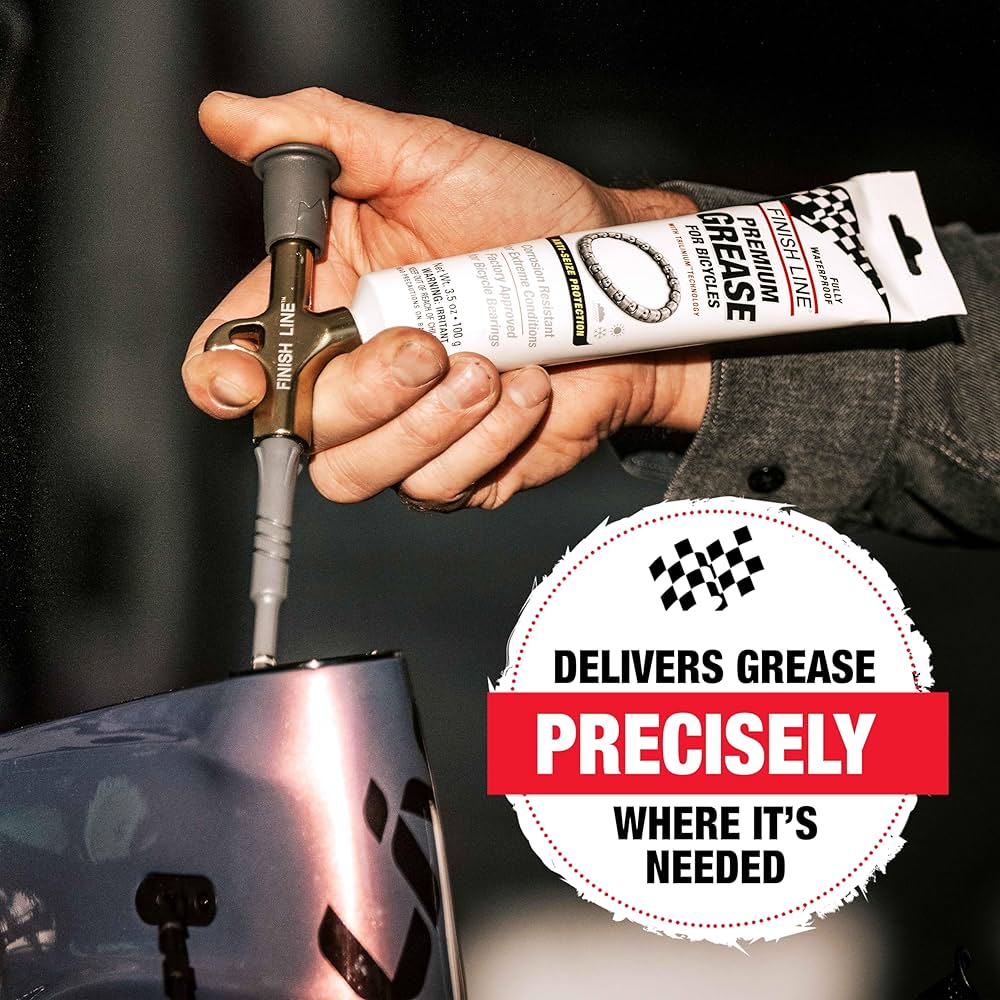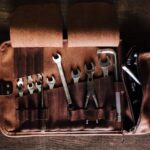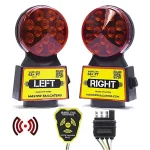A small grease gun, also known as a hand grease gun or lever grease gun, is a portable, hand-operated tool used for applying lubricating grease to various mechanical components and equipment. Its primary purpose is to deliver a precise amount of grease to bearings, bushings, hinges, and other friction-prone areas, ensuring smooth operation and reducing wear and tear.
Small grease guns are commonly used for lubricating automotive parts, machinery, tools, and household equipment. They are particularly useful for reaching tight spaces and hard-to-access areas where larger grease guns or automatic lubrication systems may not fit. These compact tools are essential for maintaining and prolonging the life of various mechanical systems, from lawn mowers and bicycles to industrial machinery and construction equipment.
Table of Contents
Types of Small Grease Guns
Small grease guns come in various types, each designed to meet specific lubrication needs and application requirements. The primary types include:
Hand-Operated Grease Guns
Hand-operated grease guns are the most basic and traditional type. They feature a lever or pistol-grip design that allows the user to manually pump grease through the nozzle. These guns are simple, affordable, and require no external power source, making them suitable for various applications, including automotive, industrial, and agricultural settings.
Air-Powered Grease Guns
Air-powered grease guns, also known as pneumatic grease guns, are powered by compressed air. They typically have a hose that connects to an air compressor, providing a continuous flow of grease without the need for manual pumping. These guns are ideal for high-volume lubrication tasks, as they can deliver grease quickly and efficiently. They are commonly used in automotive repair shops, manufacturing facilities, and heavy equipment maintenance.
Battery-Powered Grease Guns
Battery-powered grease guns are a convenient and portable option. They are powered by rechargeable batteries, eliminating the need for manual pumping or an air compressor. These guns are lightweight and easy to maneuver, making them suitable for hard-to-reach areas or confined spaces. They are often used in construction, mining, and outdoor applications where access to power sources may be limited.
Different Capacities
Small grease guns are available in various grease cartridge capacities, typically ranging from 3 ounces (85 grams) to 16 ounces (454 grams). Smaller capacity guns are more compact and portable, while larger capacity guns can hold more grease, reducing the need for frequent refills. The choice of capacity depends on the specific application and the amount of lubrication required.
Key Features
A key advantage of small grease guns is their compact size and portability. Unlike larger grease guns or pump-fed lubrication systems, these handheld tools are lightweight and easily maneuverable, allowing access to tight spaces and hard-to-reach lubrication points. Their small form factor makes them ideal for automotive work, maintenance tasks, and various industrial applications where maneuverability is crucial.
Despite their diminutive size, small grease guns are designed to deliver high pressures, typically ranging from 5,000 to 10,000 PSI (pounds per square inch). This high-pressure capability ensures effective grease delivery, even in applications with stubborn zerk fittings or heavily loaded bearings. The high-pressure output helps force the grease through small openings and displace any existing contaminants or oxidized grease, promoting better lubrication and longer component life.
Small grease guns often come equipped with a variety of attachments and accessories to enhance their versatility. Common accessories include flexible hose extensions, which enable access to hard-to-reach lubrication points, and various nozzle or coupler types to accommodate different zerk fitting sizes and styles. Some models may also include attachments for grease cartridge loading, grease level indicators, or even built-in LED lights for improved visibility in low-light conditions.
Applications and Uses
Small grease guns have a wide range of applications across various industries and settings. Here are some common uses:
Automotive
Grease guns are essential tools in automotive maintenance and repair. They are used to lubricate various components such as ball joints, tie rod ends, suspension components, and chassis points. Regular lubrication helps prevent premature wear, reduces friction, and ensures smooth operation of these critical parts.
Industrial
In industrial settings, small grease guns are used for lubricating machinery, equipment, and heavy-duty tools. They are commonly found in factories, workshops, and manufacturing facilities. Proper lubrication helps extend the lifespan of machinery, reduces downtime, and improves overall efficiency.
Construction
On construction sites, grease guns are used to lubricate heavy equipment such as excavators, cranes, and bulldozers. They help keep moving parts well-lubricated, preventing excessive wear and tear caused by constant use in harsh environments.
Maintenance
Small grease guns are invaluable tools for maintaining various mechanical systems and equipment. They are used in facilities management, HVAC maintenance, and general building upkeep. Regular lubrication ensures smooth operation, reduces noise, and prevents premature failure of components.
Household
While not as common as in industrial settings, small grease guns can also be useful for household applications. They can be used to lubricate garage door openers, bicycles, lawnmowers, and other equipment around the home. Proper lubrication helps extend the life of these items and ensures smooth operation.
How to Use a Small Grease Gun
Using a small grease gun is a straightforward process, but it’s essential to follow the proper steps to ensure efficient lubrication and avoid potential mishaps. Here’s a detailed guide on how to use a small grease gun:
Loading the Grease
- Unscrew the grease gun’s head or barrel to expose the grease chamber.
- If using a cartridge-style grease gun, insert the grease cartridge into the chamber and secure it in place.
- For bulk-fill grease guns, use a grease paddle or putty knife to scoop the desired amount of grease into the chamber, being careful not to introduce any contaminants.
- Reassemble the grease gun by securely tightening the head or barrel.
Priming the Grease Gun
- Point the grease gun’s nozzle in a safe direction, away from yourself and others.
- Slowly pump the handle or lever until you see grease emerging from the nozzle, indicating that the gun is primed and ready for use.
- Wipe off any excess grease from the nozzle to prevent dripping or mess.
Greasing Fittings
- Locate the grease fitting or zerk on the equipment you want to lubricate.
- Clean the area around the fitting to remove any dirt or debris that could contaminate the grease.
- Firmly attach the grease gun’s nozzle onto the fitting, ensuring a secure connection.
- Pump the grease gun’s handle or lever slowly and steadily, allowing the grease to flow into the fitting.
- Stop pumping when you feel resistance or see grease escaping from the fitting, indicating that it’s fully lubricated.
- Carefully remove the nozzle from the fitting, and use a clean rag to wipe away any excess grease.
Safety Tips
- Always wear appropriate personal protective equipment (PPE), such as safety glasses and gloves, to protect against grease splatter or accidental exposure.
- Never point the grease gun’s nozzle toward yourself or others, as the high-pressure grease can cause injury.
- Avoid over-greasing fittings, as this can lead to excess grease buildup and potential equipment damage.
- Follow the manufacturer’s recommendations for grease types and lubrication intervals to ensure optimal equipment performance and longevity.
- Store the grease gun in a clean, dry place when not in use, and regularly inspect it for any signs of wear or damage.
By following these steps and safety precautions, you can effectively use a small grease gun to lubricate various equipment and machinery, ensuring smooth operation and prolonging their lifespan.
Maintenance and Care
Proper maintenance and care are essential for ensuring the longevity and optimal performance of your small grease gun. Regular cleaning, proper storage, and timely replacement of worn-out parts can help prevent issues and extend the lifespan of your tool.
Cleaning:
After each use, it’s crucial to clean your grease gun thoroughly. Start by wiping down the exterior with a clean cloth to remove any excess grease or debris. Then, disassemble the gun according to the manufacturer’s instructions, taking care to keep track of all the components. Clean the individual parts with a degreaser or solvent, paying special attention to the barrel, plunger, and nozzle to remove any dried or caked-on grease.
Storage:
Proper storage is key to preventing corrosion and ensuring smooth operation. Before storing your grease gun, make sure it’s clean and dry. Apply a thin layer of lubricant to the exposed metal parts to prevent rust. Store the gun in a dry, cool place, away from direct sunlight and extreme temperatures. If storing for an extended period, consider removing the grease cartridge or tube to prevent leakage.
Replacing Parts:
Over time, some components of your grease gun may wear out or become damaged. Regularly inspect the plunger, seals, and nozzle for signs of wear or cracks. Replace any worn or damaged parts promptly to maintain the gun’s efficiency and prevent leaks or malfunctions.
Troubleshooting:
If you encounter issues with your grease gun, such as leaks, clogging, or difficulty in operation, there are a few troubleshooting steps you can take. First, ensure that the gun is properly assembled and that all components are tightened securely. Check for any obstructions or dried grease in the barrel or nozzle and clean them thoroughly. If the issue persists, refer to the manufacturer’s troubleshooting guide or seek professional assistance.
By following these maintenance and care practices, you can ensure that your small grease gun remains in optimal condition, delivering reliable performance and extending its lifespan.
Choosing the Right Grease
Selecting the appropriate grease for your small grease gun is crucial for ensuring optimal performance and longevity of your equipment. Greases are formulated with different base oils, thickeners, and additives, each designed to meet specific operating conditions and application requirements.
Grease Types
- Lithium-Based Greases: These are among the most commonly used greases and are suitable for a wide range of applications. Lithium-based greases offer good water resistance, oxidation stability, and temperature performance, typically ranging from -20°C to 120°C (-4°F to 248°F).
- Calcium-Based Greases: Calcium-based greases are known for their excellent water resistance and are often used in wet environments or applications where water ingress is a concern. They typically perform well in temperature ranges from -20°C to 80°C (-4°F to 176°F).
- Polyurea-Based Greases: These greases are characterized by their exceptional mechanical stability and resistance to high temperatures. Polyurea-based greases are suitable for applications involving high loads and temperatures ranging from -40°C to 180°C (-40°F to 356°F).
- Synthetic Greases: Synthetic greases are formulated with synthetic base oils, offering superior performance in extreme temperatures, both high and low. They are often used in applications where conventional mineral-based greases may fail, such as in high-speed bearings or low-temperature environments.
Temperature Ranges
The operating temperature range is a crucial factor to consider when choosing a grease. Different greases are formulated to perform optimally within specific temperature ranges. Using a grease outside its recommended temperature range can lead to premature degradation, reduced lubrication performance, and potential equipment failure.
Compatibility
It is essential to ensure that the grease you choose is compatible with the materials used in your equipment, such as seals, gaskets, and other components. Incompatible greases can cause swelling, degradation, or other issues that may compromise the equipment’s performance and integrity.
When selecting a grease for your small grease gun, consider the operating conditions, temperature ranges, and compatibility requirements of your application. Consult with the equipment manufacturer or a lubrication expert for specific recommendations to ensure optimal performance and longevity.
Safety Considerations
Using a small grease gun may seem harmless, but it’s essential to follow proper safety procedures to avoid potential hazards. One of the primary risks is the high pressure generated by the grease gun. Grease can be forcefully ejected, potentially causing eye injuries or puncturing the skin. Always wear safety glasses and gloves when operating a grease gun.
Additionally, some greases contain hazardous chemicals or heavy metals, which can be harmful if ingested or absorbed through the skin. Consult the product’s Safety Data Sheet (SDS) and wear appropriate personal protective equipment (PPE) such as gloves, aprons, or respirators if necessary.
Proper disposal of used grease is also crucial to prevent environmental contamination. Many municipalities have regulations regarding the disposal of greases and lubricants. Check with your local authorities or waste management service for the appropriate disposal methods in your area.
Top Brands and Models
When it comes to small grease guns, there are several popular brands and models to consider, catering to both professional and consumer needs. The choice often comes down to factors such as build quality, grease capacity, pressure output, and overall durability.
For professional use, brands like Lincoln, Graco, and Milwaukee are well-respected in the industry. Lincoln’s 1162 and 1134 models are known for their rugged construction and high-pressure output, making them suitable for heavy-duty applications. Graco’s Grip N’ Glide and Pistol Grip models offer excellent maneuverability and precise grease delivery. Milwaukee’s M18 Cordless Grease Gun, powered by a lithium-ion battery, provides convenience and portability for on-the-go lubrication tasks.
In the consumer market, brands like Plews & Edelmann, Lincoln, and Astro Pneumatic offer affordable options for homeowners and DIY enthusiasts. Plews & Edelmann’s Lubrimatic and Thumler models are known for their ease of use and reasonable pricing. Lincoln’s 3663 and 1134 models strike a balance between performance and cost, making them popular choices for light to medium-duty tasks. Astro Pneumatic’s pistol-grip grease guns are budget-friendly options for basic lubrication needs.
The cost range for small grease guns can vary significantly, with professional-grade models typically ranging from $50 to $300 or more, depending on features and brand. Consumer-level grease guns, on the other hand, can be found for as little as $15 to $50, offering a more economical solution for occasional use.
Alternatives to Grease Guns
While small grease guns are a popular and effective way to lubricate machinery and equipment, there are several alternatives that can be used depending on the specific application and accessibility of the grease point.
Brush-on Greases: These are semi-solid greases that can be applied directly to the lubrication point using a brush or spatula. Brush-on greases are ideal for hard-to-reach areas or when using a grease gun is impractical. They are often used in applications where the grease point is exposed, such as open gears, chains, or sliding surfaces. However, brush-on greases may not provide the same level of pressure and penetration as a grease gun.
Spray Lubes: Aerosol spray lubes are convenient for lubricating hard-to-reach areas or for penetrating tight spaces. They come in various formulations, including oils, greases, and dry lubricants. Spray lubes are often used for light lubrication tasks, such as lubricating hinges, locks, or small mechanisms. However, they may not provide the same level of lubrication as a grease gun and can be messy if not applied carefully.
Automatic Lubricators: These devices are designed to automatically dispense a measured amount of grease or lubricant at predetermined intervals. Automatic lubricators are commonly used in industrial settings where continuous lubrication is required, such as on conveyor systems, bearings, or other moving parts. They eliminate the need for manual lubrication and can help extend the service life of equipment by ensuring proper lubrication at all times.
It’s important to note that while these alternatives can be useful in certain situations, they may not be suitable for all applications. Grease guns remain a reliable and effective method for delivering a controlled amount of grease to lubrication points, especially in applications where high pressure and penetration are required.



